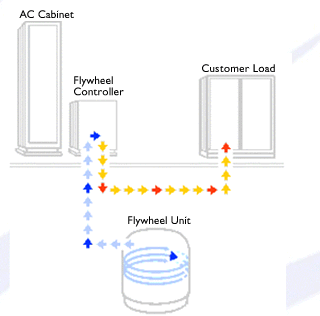
So, in other words. During times that your
generating more power than you need, you can spin the fly wheel up,
so to speak. When you need to recover that energy, you let the fly wheel
spin down.
Inertia of the Flywheel helps keep the system going.
Flywheels are about 80% efficient (like hydro)
Flywheels do take up much less land than pumped hydro systems
Fused Silica Flywheels are possible:
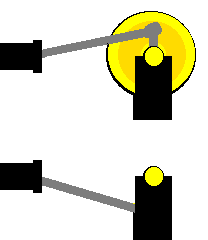 The model with the small yellow disc tends to stop when the crank and connecting rod are in a straight line ('dead' spots) - because sliding the brass knob exerts no turning force on the shaft. In the model with the big yellow flywheel, it is easy to keep the disc turning, once it has started, due to the effect of the flywheel. The mass and the size of the big flywheel helps resist the slowing down of the model as it is turning.
Beacon Power - the Leader in Flywheel
Technology

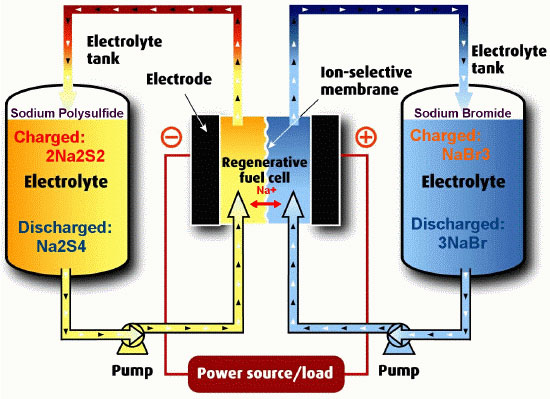 Excitement over flow batteries derives from their attributes, which combine aspects of conventional batteries and fuel cells. They are relatively simple, efficient, scalable, durable, and can optimize either power or energy output, as desired. Flow batteries can respond in fractions of a second and can cycle rapidly and deeply at high or low power output with minimal battery degradation.
|
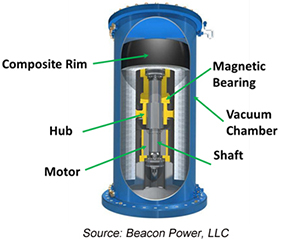 A flywheel, in essence is a mechanical battery - simply a mass rotating about an axis. Flywheels store energy mechanically in the form of kinetic
energy. They take an electrical input to accelerate the rotor up to speed by using the built-in motor, and return the electrical energy by using this
same motor as a generator.Flywheels are one of the most promising technologies for replacing conventional lead acid batteries as energy storage systems.
A flywheel, in essence is a mechanical battery - simply a mass rotating about an axis. Flywheels store energy mechanically in the form of kinetic
energy. They take an electrical input to accelerate the rotor up to speed by using the built-in motor, and return the electrical energy by using this
same motor as a generator.Flywheels are one of the most promising technologies for replacing conventional lead acid batteries as energy storage systems.
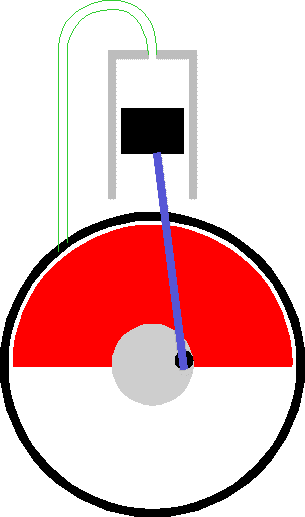
 High tensile strength material allows it
to be rotated very fast (100,000 rpm) without flying apart
High tensile strength material allows it
to be rotated very fast (100,000 rpm) without flying apart